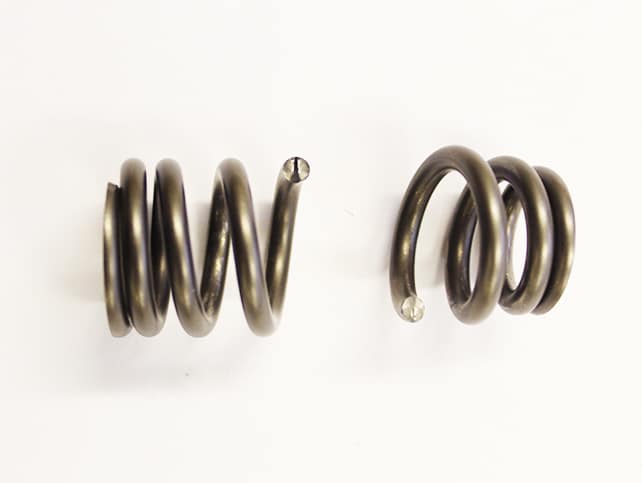At Jackson Spring, we know that springs may look simple—but delivering long-lasting performance takes expertise. In the world of spring manufacturing, small oversights in design, material selection, or production processes can lead to costly failures down the line. Understanding the most common failure modes is essential for manufacturers, OEMs, and engineers looking to extend product life and reduce downtime.
This guide breaks down the leading causes of spring failure and offers actionable tips rooted in spring manufacturing best practices. Whether you’re sourcing springs for aerospace, automotive, or industrial machinery, avoiding these pitfalls can make all the difference.
1. Design missteps are often the root cause of premature spring failure.
Key issues:
- Incorrect dimensions such as wire diameter, coil spacing, or free length can lead to uneven stress distribution.
- End condition errors (e.g., unground ends) may cause buckling or side-loading.
- Misunderstood load requirements or application conditions can result in unintended performance problems.
Prevention tips:
- Work closely with your spring manufacturing partner during design to validate loads, environment, and mounting constraints.
- Use simulation tools to verify stress levels and spring behavior under all conditions.
- Document all end conditions and design constraints before entering production.
2. How Environmental Factors Impact Spring Manufacturing Quality
Even a well-designed spring can fail when material selection doesn’t match the service environment.
Key issues:
- Using non-resistant materials in corrosive or high-temperature environments leads to premature degradation.
- Fatigue from repetitive loading, especially in high-cycle applications, can create cracks and eventual failure.
- Exposure to moisture, chemicals, or salt can rapidly deteriorate unprotected springs.
Prevention tips:
- Choose materials suited to the application environment—stainless steel, Inconel, or coated high-carbon steels.
- Apply protective coatings or platings when required.
- Conduct fatigue testing for high-cycle uses to ensure long-term durability.
3. Process Control Challenges in the Spring Manufacturing Lifecycle
Manufacturing defects are another major source of failure in spring manufacturing.
Key issues:
- Poor heat treatment or lack of stress relief can leave residual stresses.
- Surface defects from tooling, coiling errors, or misaligned ends act as stress risers.
- Damage during plating, assembly, or secondary operations can shorten spring life.
Prevention tips:
- Ensure quality control throughout manufacturing, including heat treatment and coiling.
- Inspect for surface finish, consistency, and correct dimensions.
- Monitor secondary processes to prevent unintended stress or damage.
4. Service & Installation Errors That Undermine Spring Manufacturing Success
Real-world use often differs from ideal lab conditions. Even high-quality springs can fail in the field if mishandled.
Key issues:
- Overloading or off-axis forces during use lead to bending, fatigue, or snapping.
- Misalignment or incorrect installation can generate unexpected forces.
- Operating outside design temperature or chemical limits causes failure.
Prevention tips:
- Provide clear mounting and handling instructions.
- Train installation teams and perform regular inspections.
- Adjust design or maintenance intervals if operating conditions change.
5. Spring Failure Summary: A Spring Manufacturing Perspective
| Failure Mode | Typical Cause | Counter-Measure |
|---|---|---|
| Permanent deformation | Overload, wrong material, creep | Re-design for lower stress, better material choice |
| Fatigue fracture | High cycle loads, micro-cracks | Fatigue-resistant alloy, surface treatment |
| Corrosion/environmental | Inadequate protection | Coatings, corrosion-resistant materials |
| Manufacturing defects | Surface flaws, poor coiling | Quality tooling, inspections |
| Mis-installation | Alignment issues, wrong mounting | Clear specs, proper training |
Why Spring Manufacturing Excellence Matters
In today’s engineering world, springs are key components across countless assemblies—automotive suspensions, industrial actuators, medical devices, and more. A failed spring can mean not just part replacement but downtime, warranty claims, or safety concerns. Prioritizing quality at every stage of the spring manufacturing process helps prevent problems before they start.
At Jackson Spring, we believe that treating springs as engineered components—not commodities—yields better long-term results. If you’re reviewing spring specifications, addressing recurring failures, or simply want expert insight, we’re ready to help.

